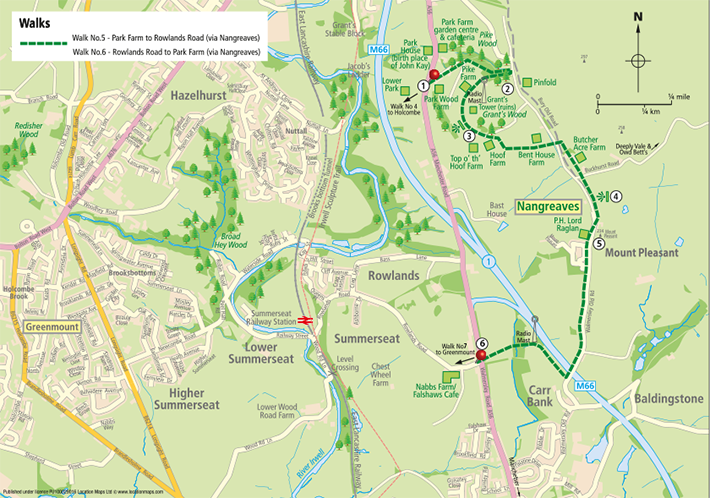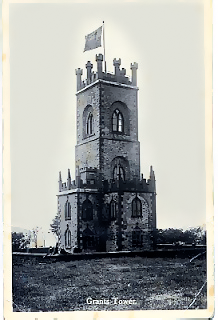|
|||||||||||||||||||||||||||||||||||
|
|||||||||||||||||||||||||||||||||||
|

| Click to download walk | |
Cross the stile turning left up the stone cobbled road to the village of Mount Pleasant. |
|
| This was the old turnpike road between Bury and Burnley, in 1790 it was improved by the famous road builder John Metcalf of Knaresborough who was known as “Blind Jack” due to losing his sight as a child from smallpox. A wax effigy of him can be seen in the museum of Knaresborough, which states that he was a smuggler before he became a road builder. employed from as far afield as Bolton and Leigh. However, with the ever increasing mechanisation of the textile industry, more of the weaving was done within the mill than outside and the last of handloom weaving was in 1888. The village expanded to accommodate the additional spinners and weavers employed in the mill. This, together with the remoteness of Nangreaves, combined to make Mount Pleasant a largely self-contained mill village that became a conservation area in 1973. The mill eventually closed in the 1980’s and was partially demolished. The stone used to build additional cottages changed the village into a wholly residential community. Refreshments are available at the Lord Raglan, a cosy, 19th century family-run pub and micro-brewery just on the way out of the village. |
|
| Leaving Mount Pleasant behind, keep following Bury Old Road north. |
|
|
|
This tower was much more ornate and built 24 years before Holcombe Tower, in1828 by William and David Grant (said to be the model for the philanthropic Cheeryble brothers in Dickens’ 1838 novel Nicolas Nickleby) as a memorial to their father William. It was built on the Top o’ th’ Hoof, because many years earlier when the whole family had walked from Scotland, having fallen upon hard times and hoping to find work in Manchester, they had stopped there to rest their weary bones. Their father had looked down into the valley and said the landscape was the closest they had seen to one they had left behind in the Highlands and if they could ever afford it they would return one day. Well, they did return as wealthy men and in time built the biggest, most modern calico bleaching and finishing works in Europe, Square Mill. Within ten years the firm of William Grant and Brothers became one of the most famous in Lancashire. Ramsbottom was transformed as a result. Edwin Waugh, the famed Lancastrian poet, whilst convalescing in a room in the tower, wrote “Lie thi’ doon laddie”. But perhaps the most famous resident of all was Steeple Jack and his family. Steeple Jack’s real name was James Wright, who came down from Dundee to Ramsbottom to repair one of Grant’s factory chimneys and took up residence in the Tower, living there for many years. In time he became known to all as Steeple Jack, which later on became the nickname/ job title of anyone working on church steeples or mill chimneys. In 1943, when the Tower had fallen into disrepair, Ramsbottom Council offered to buy it but sadly, before the sale went through, the tower collapsed on the 21st September 1944 in a violent storm. |
|
 Leave the remains of the tower via the wooden stile in the fence on the north side beneath the radio mast. Go down the path into Pike Farm’s yard and turn right out along the farm track. Leave the remains of the tower via the wooden stile in the fence on the north side beneath the radio mast. Go down the path into Pike Farm’s yard and turn right out along the farm track. Follow the old and disused cart track downhill (take the alternative path on the right to avoid sections which can be boggy in parts after heavy rain) all the way through the upper paddock and storage yard and the lower yard of Park Wood Farm to emerge on Walmersley Road (A56). Opposite is the start of Village Link Walk No 4 to Holcombe via Ramsbottom.  |
|
| BACK TO TOP | |

 Pass Butcher Acre, a large house on the right, and turn next left through Bent House Farm.
Pass Butcher Acre, a large house on the right, and turn next left through Bent House Farm.